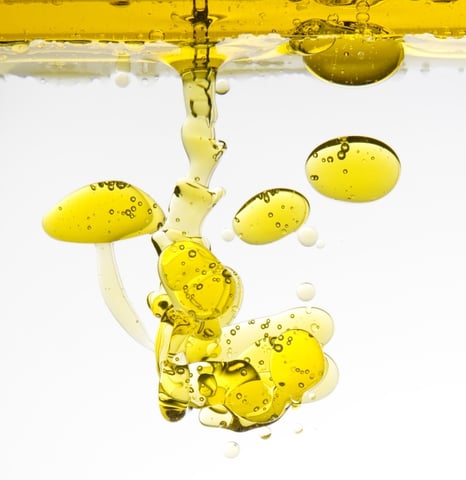
In enhanced oil recovery (EOR) and other oil-related research, the interface between oil, brine and reservoir rock are under investigation. Interfacial tension and contact angle measurements can give valuable information for process development whether it is in enhanced oil recovery or drilling fluid optimization. As many of the processes take place under high pressures and elevated temperatures, there is a need for a sophisticated measurement instrument capable of producing results at these extreme conditions. In oil research, the bulk phase can vary from highly concentrated brine to gas and the drop phase can be, for example, crude oil. Thus several aspects should be considered when choosing the most suitable instrument for your studies.
Sample introduction is one of the first steps when preparing for the measurements. In an ambient analysis, the sample would be dispensed with a disposable pipette tip. But when working with high pressures such simple dispensing is not an option, and high-pressure pumps are needed. As many of the samples used, such as crude oil, are considered contaminant, it is not possible to have them inside the pumps. Or at least cleaning of the pump when changing the sample would be tedious. Drawing a small amount of sample into the needle line can also be problematic due to the high viscosity of the sample. The high viscosity makes the amount of picked up sample challenging to control, and the air is often taken in at the same time. Therefore, smart sample introduction where a known amount of sample is pushed in with a syringe is needed.
After all the preparations, the next step is to increase the pressure. Raising the pressure sounds straightforward. Just, add more of the liquid or gas you use as a bulk phase into your closed cell, and the pressure will increase. In theory, this is correct, and in many cases, this can be done in practice as well. However, when surfactant solutions are used as the bulk liquid, it can be problematic to maintain the constant surfactant concentration. To keep the surfactant concentration constant throughout the measurements, you must pump the same concentration solution into the chamber to increase the pressure. This means that your pump has to be filled with surfactant solution. In some cases, this might work, although changing the surfactant solution to another would require thorough cleaning of the pump. When working with CO2 - based surfactant systems, it would be practically impossible.
Even if you are not working with surfactants, the pressure increase might require some thinking. If you have corrosive bulk solutions, like concentrated brine, you want to minimize the contact area between the brine and the system. Again, filling the pump with the brine is not ideal, both due to the contamination issues as well as corrosive nature of concentrated brine solutions. Thus, additional means for pressure increase are required. One possible solution is to decrease the volume of the cell and thus increase the pressure inside. This can be done with a unique piston design.
When working with gases, the pump used needs to be selected carefully as manual pumps cannot be used due to high compressibility of the gas. It is of course in theory possible to directly connect the gas bottle into the measurement chamber but then the pressure control is not feasible, and to increase the pressure above the gas bottle pressure is impossible. A gas booster could be used, but it adds complexity to the system.
Last, but not least, the cleaning of the system should be made as simple as possible. Interfacial interactions are highly sensitive to contaminations which makes the cleaning one of the most critical steps in your measurement process. Without smart solutions to minimize cleaning it could also take most of your measurement time. One way to reduce cleaning is to minimize the contact between contaminated fluids and the system.
See the short webinar below to hear of possible ways to solve the issues mentioned above.
Nanoparticles alone or integrated with conventional enhanced recovery processes have shown promising performance in improving oil recovery.
Studies show the influence of EOR agents on the reservoir rock wettability. Studies are not considering the reservoir conditions i.e. high pressure.
There are three commonly used wettability measurement techniques for oil reservoir characterization; Contact angle, Amott-Harvey, and USBM.
Using so-called smart water flooding has increased interest in both sandstone and carbonate reservoirs due to its low cost and minimum impact on the environment.
Most commonly used methods to study reservoir wettability are Amott-Harvey, USBM, and sessile drop contact angle.
Carbonate reservoirs are characterized as intermediate to oil- wet. Altering the wettability of the carbonates has been proposed as one of the main mechanisms for enhanced oil recovery.
Different enhanced oil recovery methods are used to alter the wettability of the reservoir rock. To study the wettability alteration at the reservoir conditions, an instrument where the measurements can be done at high pressures and temperatures are needed.
Unconventional oils, such as heavy oil, extra heavy oil, and bitumen, normally exist tightly on host solids such as rocks, sands and clay minerals. Successful liberation of unconventional oil from solids is essential for effective recovery.
In enhanced oil recovery wettability plays an important role as that determines the interactions between the solid (rock) and the liquids in the reservoirs (crude oil, brine). Wettability has been recognized as one of the key parameters controlling the remaining oil-in-place.
